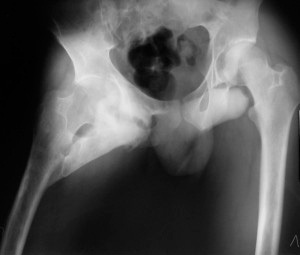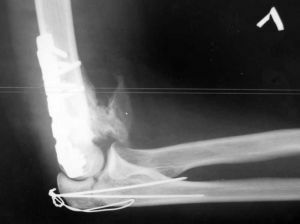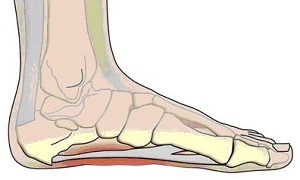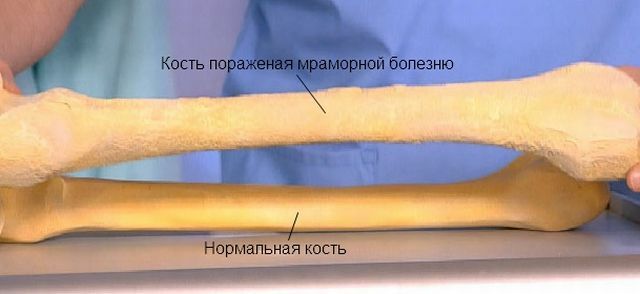 Ossicata are pathological neoplasms of bone tissue in the soft tissues of the body.
Ossicata are pathological neoplasms of bone tissue in the soft tissues of the body.
The etiology and pathogenesis of ossification formation have not been fully studied, there are many hypotheses.
In patients at risk, patients with muscle hypertension, for a long time( more than 2 weeks) arriving in a coma, with fractures of long tubular bones, with restrictions on the volume of movement of the joints.
Among neurological patients most often the disease occurs after injuries of the brain and spinal cord.
The content of the article
- The content of the article
- The location of the
- lesions The clinical picture
- Treatment and development of the
- formulations Therapeutic exercise
- Medication
- Extreme measures
Where the neoplasms are formed
Ossicles are usually formed in soft tissues in the area of large joints of the upper( ulnar,) and lower extremities( hip, knee) on top of the articular bag, at the site of fracture of the tubular bones after 1-3 months after their trauma.
Neoplasms in the periarticular tissues most often appear after damage to the elbow joint, it is believed that this is due to the good blood supply of this site and the formation of large bruises.

Clinical picture
Symptoms of the disease include pain, swelling, redness and densification of the affected area, some patients may have fever, the clinical picture is sometimes similar to thrombophlebitis or infectious arthritis.
If the ossicle is located near the joint, the mobility in the affected joint may decrease until the development of ankylosis.
Neoplasms cause jamming of nerve endings, formation of pressure ulcers, increase the likelihood of developing  deep vein thrombophlebitis.
deep vein thrombophlebitis.
The disease is diagnosed on the basis of a clinical picture and a blood test, in which the concentration of alkaline phosphatase will be increased. On the usual roentgenogram, the first signs of the pathological process will be visible only on the 7-10th day after the onset of symptoms of the disease.
For the early diagnosis of pathology, a three-phase scan method is currently used in the region of tumors, in the first phase of the study, local increase in blood flow and accumulation in the soft tissues of isotope indicators is seen.
Treatment and development of
formulations There are three ways to treat ossification, with the help of which, if you can not completely get rid of tumors, you can at least reduce them in size so that they do not worsen the quality of life of the patient.
 These are development of neoplasm with the help of physiotherapy in combination with physiotherapy, drug therapy and a radical method of surgical removal of neoplasms.
These are development of neoplasm with the help of physiotherapy in combination with physiotherapy, drug therapy and a radical method of surgical removal of neoplasms.
Operation is resorted to when physical therapy does not work.
Physiotherapy
The development of ossification is a very long process, it must be done carefully so as not to injure or break new growths, otherwise it can provoke its further growth.
It is important to find a competent instructor in physiotherapy exercises.
During training, it is necessary to maintain the maximum amplitude of motion, which ossification allows.
Sometimes, the actions aimed at increasing the amplitude of movements in the affected joint are performed under anesthesia.
Drug treatment
Medicines prescribe drugs etidronovoy acid, which, according to clinical studies, with spinal and spinal trauma reduces the frequency and severity of ossifacts with a small number of adverse reactions. 
In Russia, a domestic medicinal product based on etidronic acid "Xidifon" is registered. In spinal cord injury, it is taken for 6-9 months: first 3 months - at a dosage of 20 mg / kg / day, and then in a dosage of 10 mg / kg / day.
For the removal of inflammation, the doctor can also prescribe non-steroidal anti-inflammatory drugs( indomethacin, lornoxicam, salicylates).
Extreme measures
In some cases, an operation is required to completely or partially remove the ossification. Complications of surgical interventions include bleeding, sepsis, and relapse of the disease.
Renewal of the disease is much less common if surgery is performed after the maturation of bone tissue. Therefore, the operation is done after 1-1.5 years after the injury.
To reduce the probability of relapse after surgical removal of neoplasm in some patients, radiotherapy is used in minimal doses, and long courses of etidronic acid preparations are prescribed.
Therapy and the development of Ossicles is a very long, complex, and sometimes painful process.
And only constant training in physical therapy under the guidance of an experienced instructor, compliance with all prescriptions of the doctor, if not completely ways to overcome the ailment, then significantly improve the quality of life of the patient.



